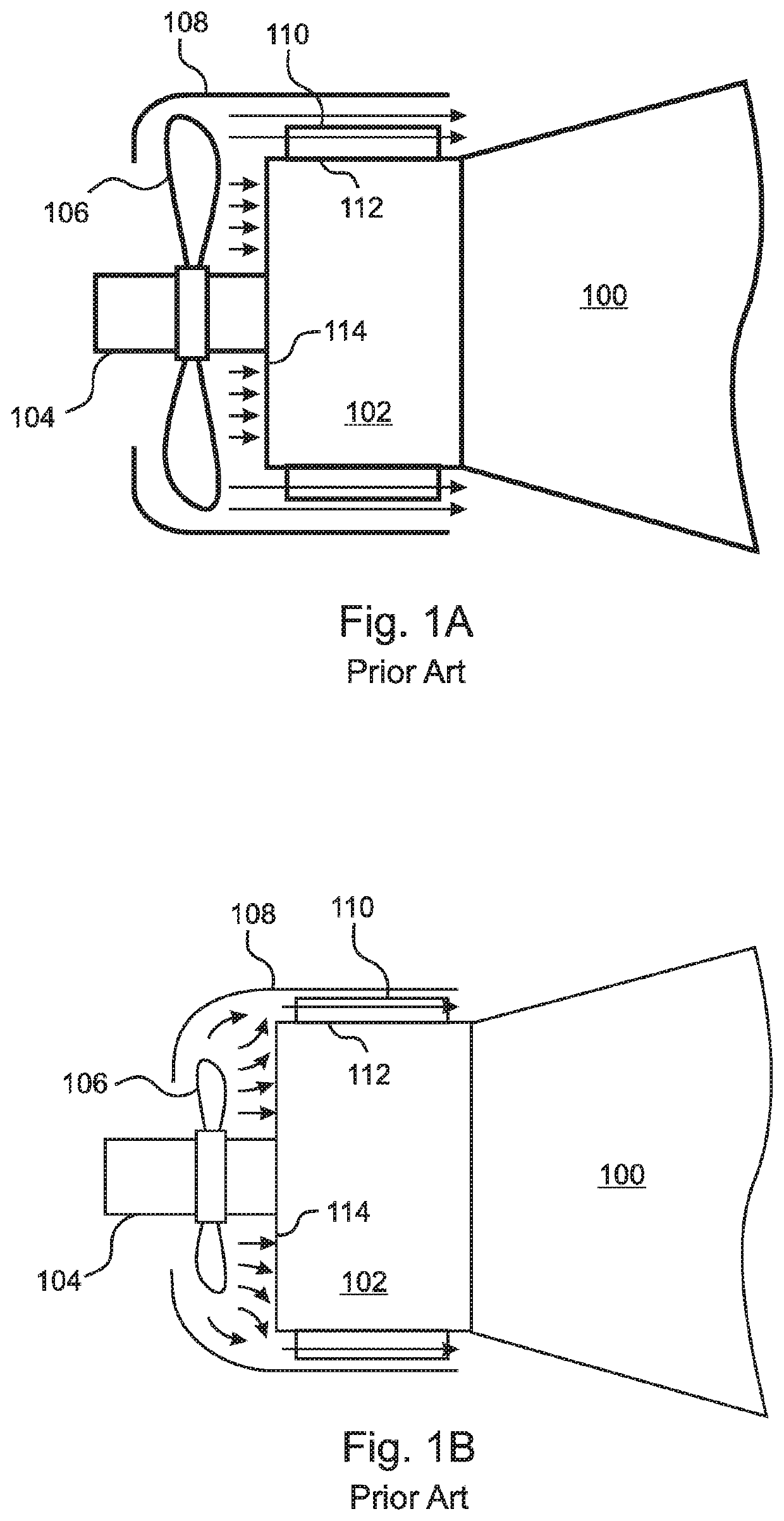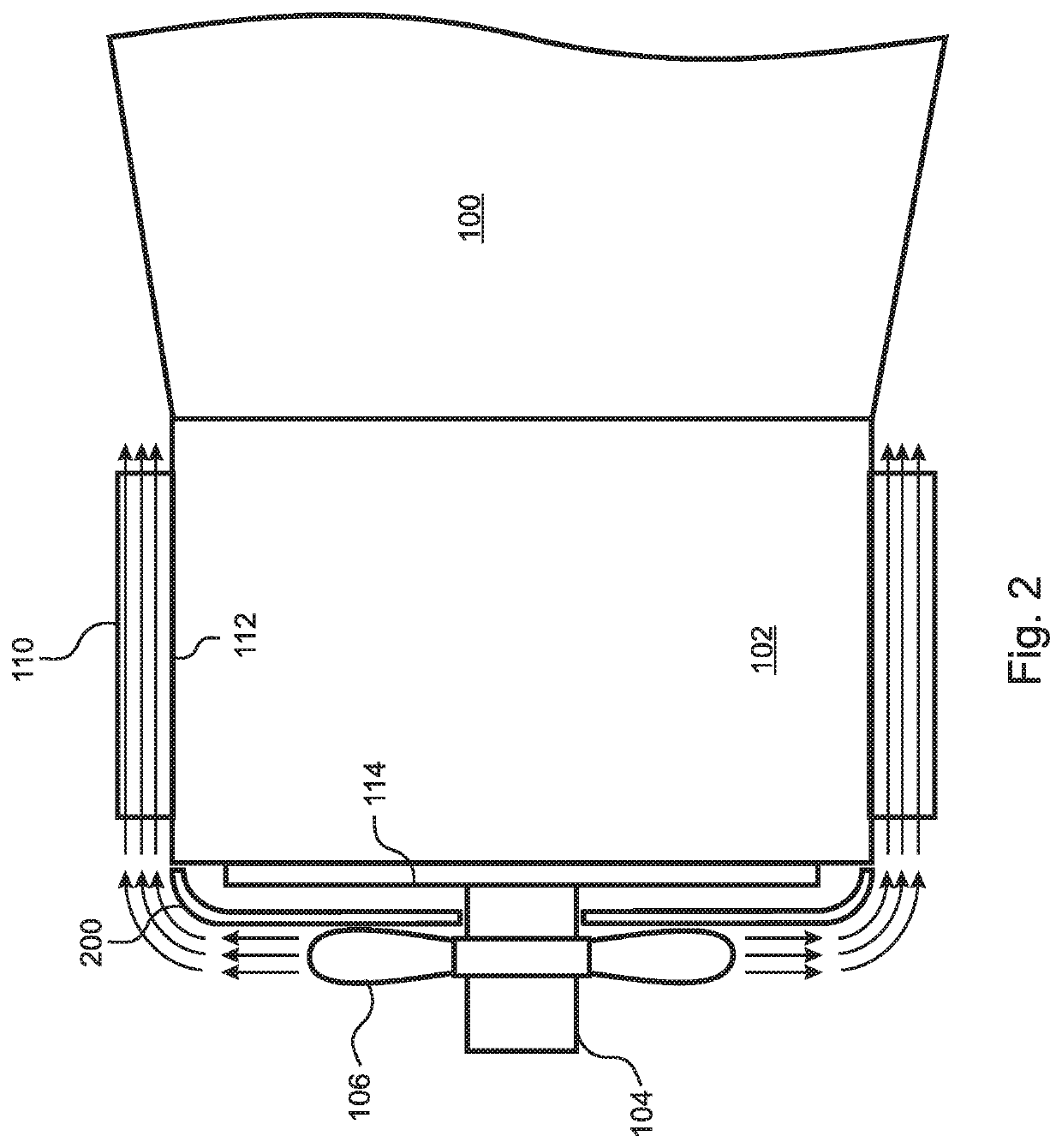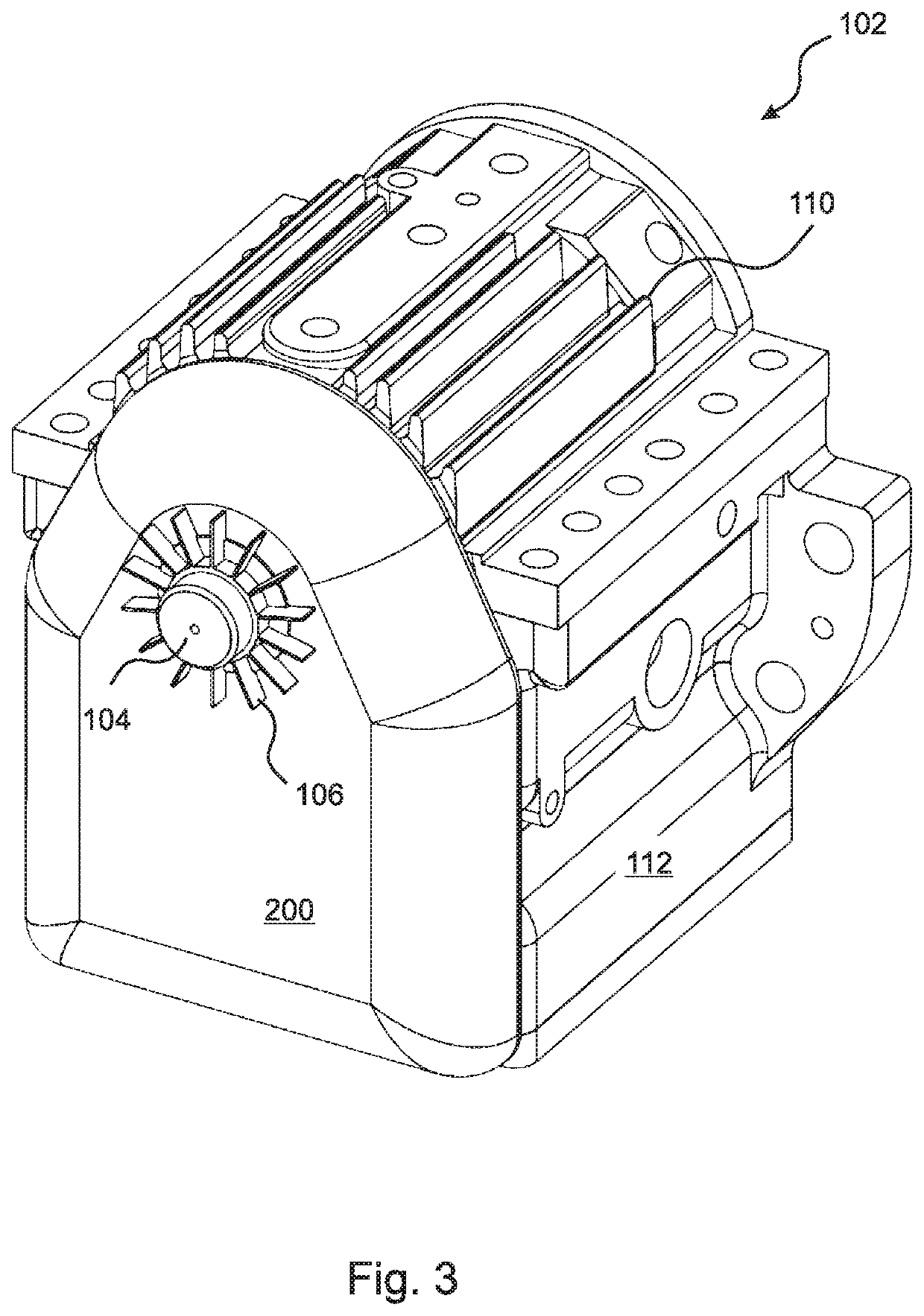Coanda effect bearing cooler
- Summary
- Abstract
- Description
- Claims
- Application Information
AI Technical Summary
Benefits of technology
Problems solved by technology
Method used
Image
Examples
Embodiment Construction
[0046]The present invention is a compact and energetically efficient apparatus for applying cooling air to a bearing housing of a rotating shaft device. The cooling apparatus does not add significant load to the rotating shaft, and requires only a minimal increase in system bulk.
[0047]According to the present invention, a fan blade that is smaller in diameter than the bearing housing is mounted on the extending end of the rotary shaft adjacent to a Coanda surface, and is configured to direct a flow of air radially outward and tangential to the Coanda surface. The center of the Coanda end surface is perpendicular to the rotating shaft, while a periphery of the Coanda end surface makes a smoothly curved transition to axial alignment with the side of the housing.
[0048]Instead of relying on ductwork, the disclosed apparatus makes use of the Coanda effect to redirect the airflow from radial to axial, and to maintain the airflow in close proximity to the housing. In embodiments, the Coand...
PUM
 Login to View More
Login to View More Abstract
Description
Claims
Application Information
 Login to View More
Login to View More - R&D
- Intellectual Property
- Life Sciences
- Materials
- Tech Scout
- Unparalleled Data Quality
- Higher Quality Content
- 60% Fewer Hallucinations
Browse by: Latest US Patents, China's latest patents, Technical Efficacy Thesaurus, Application Domain, Technology Topic, Popular Technical Reports.
© 2025 PatSnap. All rights reserved.Legal|Privacy policy|Modern Slavery Act Transparency Statement|Sitemap|About US| Contact US: help@patsnap.com



